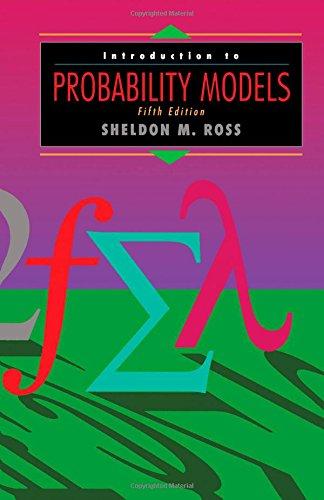19. Suppose we want to simulate a large number of independent exponentials with rate 1call them...
Question:
19. Suppose we want to simulate a large number ç of independent exponentials with rate 1—call them Xx, X2,..., Xn. If we were to employ the inverse transform technique we would require one logarithmic computation for each exponential generated. One way to avoid this is to first simulate Sn9 a gamma random variable with parameters (ç, 1) (say by the method of Section 11.3.3). Now interpret Sn as the time of the Azth event of a Poisson process with rate 1 and use the result that given Sn the set of the first ç - 1 event times is distributed as the set of ç - 1 independent uniform (0, Sn) random variables. Based on this, explain why the following algorithm simulates ç independent exponentials.
Step 1: Generate Sn, a gamma random variable with parameters (ç, 1).
Step 2: Generate ç - 1 random numbers Ux, U2,..., Un_x.
Step 3: Order the Ui9 i = 1, . . . ,ÁÉ - 1 to obtain £/( 1) < £/( 2) < · · · <
^(,1-1)·
Step 4: Let £/( 0) = 0, U{n) = 1, and set Xt = Sn(U(0 - £/(é·_ 1}), i = 1 , . . . , n.
When the ordering (Step 3) is performed according to the algorithm described in Section 5, the above is an efficient method for simulating ç
exponentials when all ç are simultaneously required. If memory space is limited, however, and the exponentials can be employed sequentially discarding each exponential from memory once it has been used, then the above may not be appropriate.
Step by Step Answer:







